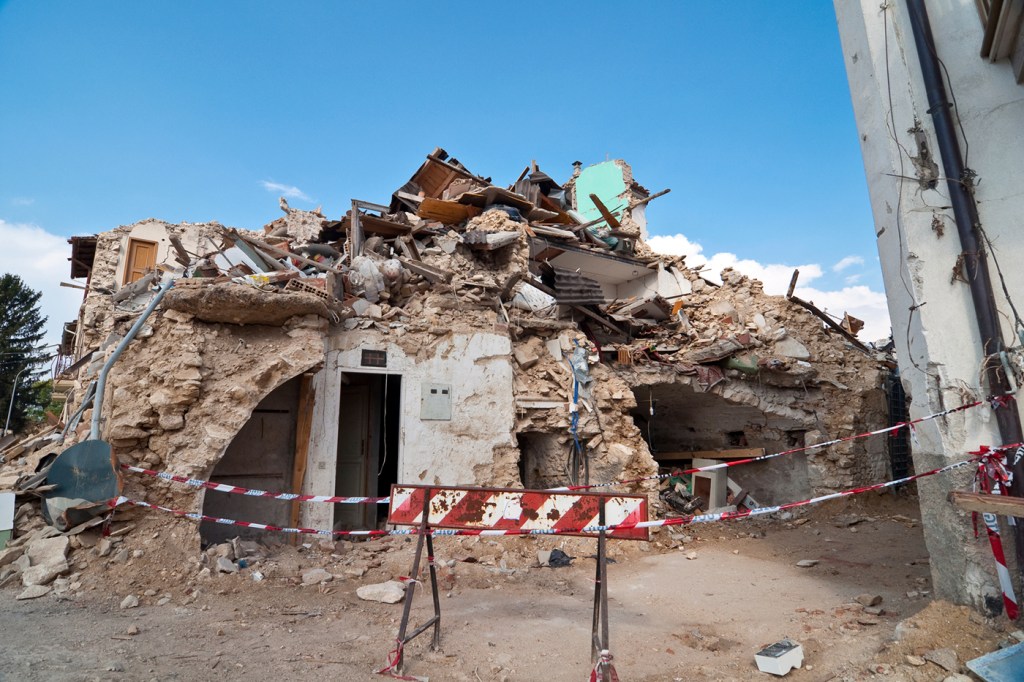Infrastructure, shallow earthquake contribute to Italian towns’ destruction

On Wednesday morning, central Italy was rocked by a devastating 6.2 magnitude earthquake that killed at least 250 people and injured more than 365 others.
Two small towns—Amatrice and Accumoli—were all but flattened by the quake, while tremors and aftershocks could be felt throughout the day and as far away as Rome and Florence. The towns closest to the epicenter of the relatively shallow earthquake were heavily populated with centuries-old stone churches and other buildings. Additionally, the area is a popular vacation spot for Italians looking to escape the frenzy of city life, particularly this month.
This combination of factors created something of a perfect storm of destruction, said Daniel Aldrich, professor of political science, public policy, and urban affairs and co-director of the Master’s in Security and Resilience Studies program at Northeastern. An expert in resilience and post-disaster recovery, Aldrich offered some insight into the earthquake in Italy and the long rebuilding process ahead.
Broadly, what was it about this particular earthquake that was so devastating to Amatrice?
Two main factors made this earthquake so devastating: the 6.2 magnitude that struck at 3:36 a.m. was quite shallow and the buildings in the area were built using brick and stone. Shallow earthquakes—those between 4 and 10 kilometers—channel more vibrations into surface structures, which in this case were quite brittle. Further, the area is where many Romans and Italians have their second homes and were spending their summer vacation until the school year starts. Unlike other seismically-exposed communities, Italy has not invested heavily into earthquake-proof construction.
Does Italy’s historic architecture make that investment more difficult or was it a matter of diverting resources elsewhere?
Italy has struggled with a variety of domestic issues including corruption scandals, low investment in infrastructure upgrades, and a relatively weak economy. Reports indicate that buildings constructed before the 1980s—which are the majority of buildings, especially in older, rural areas—collapsed or had major damage. More recent buildings had a better chance of surviving but even some of these did not survive the intense shaking.
Italy has a strong penchant for maintaining traditional structures and this has its consequences.
How big of a factor was the town’s centuries-old infrastructure to the destruction we’re seeing now, and could anything have been done to prevent this?
The centuries-old infrastructure in time was a large factor in the number of casualties. A number of scholars have argued that many communities that are at risk from seismic events, such as San Francisco; Santiago, Chile; and Wellington, New Zealand, have made upgrading older infrastructure a priority. In doing so, they undoubtedly will save lives. Italy has a strong penchant for maintaining traditional structures and this has its consequences.
Italy has a long history of powerful earthquakes. Is the country doing enough to protect against these sorts of known, natural events? If not, what do you think it should be doing differently?
Unfortunately, Italy has prosecuted geologists in the field of earthquakes for manslaughter when they failed to predict the 2009 earthquake, and in doing so it has no doubt driven some out of the field. When a state does not support those who seek to build resilience and improve disaster service, it is doing a major disservice to society. Italy should follow the example of countries like Chile that have worked to upgrade their infrastructure due to real risk from seismic activities.

Daniel Aldrich, professor of political science, public policy, and urban affairs and co-director of the Master’s in Security and Resilience Studies program at Northeastern
Physical reconstruction aside, how does a community go about rebuilding socially and emotionally after an event such as this one? What sorts of social patterns do you typically see?
Post disaster reconstruction typically moves through phases of search and rescue, short term shelter, and then slow recovery. While some scholars have tried to connect disaster recovery times to the strength of the event, in reality other factors, such as community cohesion, strong governance, and good oversight are critical accelerators of reconstruction. We know from a great deal of research—much of it carried out here at Northeastern University—that strong social connections, trust, and good government are important predictors of rapid rebuilding.
To the extent that it’s possible, explain what a survivor from Amatrice or Accumoli might be thinking or feeling in these initial days following the earthquake.
Many survivors go through stages of grief, shock, and anger after the destruction of their homes and communities. The fact that many had no time to grab meaningful items—such as pictures, family heirlooms, and the like—may result in them losing objects that cannot be replaced. Further, the rhythms of daily life have been disrupted. Businesses are closed, roads impassable, schools shut down, and many people are in morgues and hospitals. True recovery will come when the daily rhythms of life have been restored.
Many media outlets are noting that religious figures—including priests and nuns—seem to be actively involved in the early recovery process. How important is that sort of faith-based center to a community’s ability to heal?
Faith-based organizations are a critical component of the social ties and cohesion in the community. Nuns and priests within the Catholic Church are an integral part of the social fabric throughout Italy and can offer information, solace, and meaning to survivors. Survivors have regularly reported that making sense of the deaths of loved ones, the loss of property, and the terror of the tragedy helps turn a negative event into a more manageable one.





